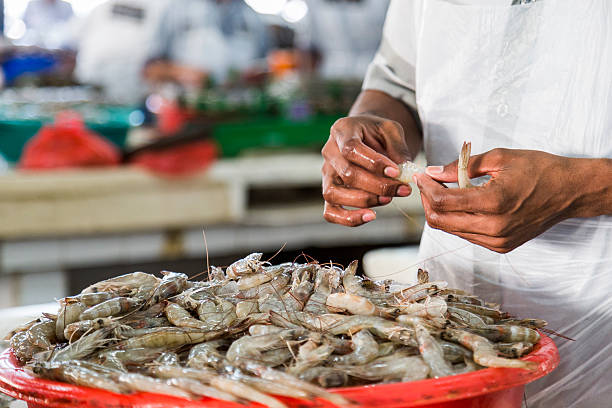By Steven O. Mukoro
A group of research scientists have discovered that colistin resistance found in imported seafood does pose a very dangerous trend capable of leading to global health risks.
Colistin, once considered a last-resort antibiotic for treating life-threatening infections, is rapidly losing its effectiveness— and new research points to a troubling source: imported seafood.
A team from the University of Georgia has identified colistin-resistance genes in bacteria isolated from shrimp and scallops purchased at eight food markets across Atlanta, Georgia. The findings highlight a new pathway for the global spread of antimicrobial resistance.
The resistance genes, found on mobile DNA structures called plasmids, can easily jump between bacteria, potentially transforming once-treatable infections into lethal threats.
This discovery builds on a 2016 breakthrough when scientists first realized that colistin resistance could spread laterally among microbes. Now, with resistance genes turning up in imported seafood, concerns are growing that the global food trade may be fueling the silent rise of superbugs.
Lead researcher Issmat Kassem, Ph.D., will present the findings this week at ASM Microbe 2025, the annual meeting of the American Society for Microbiology in Los Angeles. A full report will be published in the ASM journal mSphere.
“We love our seafood,” Kassem said. “Most Americans don’t realize that the majority of the seafood they eat—about 90% of shrimp, for example—is imported,” he said. “While imported seafood is screened for contaminants, current methods often miss antimicrobial resistance genes.” “The bacteria that were carrying colistin resistance genes are not normally screened.” Kassem and his team also discovered that some of the resistance genes are located on plasmids—circular pieces of genetic material that can easily transfer between bacteria.
Antimicrobial-resistant infections kill hundreds of thousands of people worldwide each year, posing an escalating public health threat. Colistin, a powerful antibiotic introduced in the 1950s to combat infections caused by Gram-negative bacteria, was once considered a last-resort treatment. However, its use came at a cost—patients faced serious side effects, including nerve and kidney damage—which led to its discontinuation in the U.S. during the 1980s.
Despite this, colistin continued to be used in agriculture in other countries, both to treat infections in animals and to promote growth. As resistance to other antibiotics increased, colistin was reintroduced into human medicine, becoming one of the few remaining options for treating certain multidrug-resistant infections. The World Health Organization now classifies colistin as a “high priority critically important antibiotic” due to its essential role in treating severe infections.
In 2016, researchers made a pivotal discovery: the mobile colistin resistance gene, or mcr, which could be transferred between bacteria via plasmids—a form of lateral gene transmission. Prior to this, scientists believed colistin resistance could only be passed down genetically, not shared across bacterial strains.
“which means it could not jump between different bacteria.”
Researchers have now identified at least 10 distinct mcr genes, along with numerous alleles, or genetic variations. Kassem, a microbiologist with over 20 years of experience studying antimicrobial resistance, long suspected that global food trade could be a pathway for its spread.
“Our food is sourced from different places,” he said. “If you go out to lunch today, your plate might have ingredients from 6, 7, 8 countries. Some countries do not have strict regulations for using antibiotics in food animal production, so imported food can be a vehicle for transmission of resistance.”
In earlier research, Kassem’s team detected mcr genes in wastewater samples from Georgia, along with the specific bacterial host carrying the plasmid that housed those genes. That particular bacterium, he noted, isn’t typically included in routine screening of imported food. Since then, other studies have also identified mcr genes on plasmids in different parts of the world.
When the team later analyzed seafood bought from markets in Georgia, they found a troubling match: the same bacterial host, the same plasmids, and the same resistance genes previously discovered in wastewater.
“The good news is that we didn’t find it in locally produced seafood,” Kassem said.
He cautioned that while his team identified one source of colistin resistance, there are likely others—and they may already be spreading.”We live in a very connected world,” he said. “We move a lot, we travel a lot, our food travels, and we are going to spread whatever emerges, even across national borders. So, it’s important to invest in monitoring systems and expand them and collaborate, especially on the global level, on the issue of antimicrobial resistance.”





